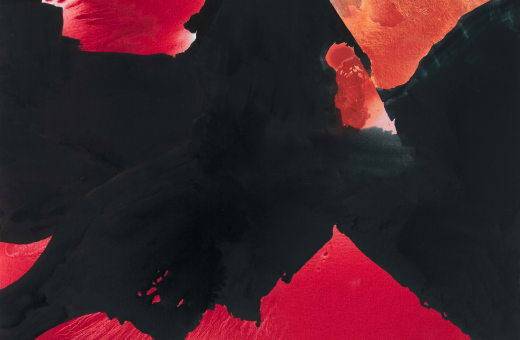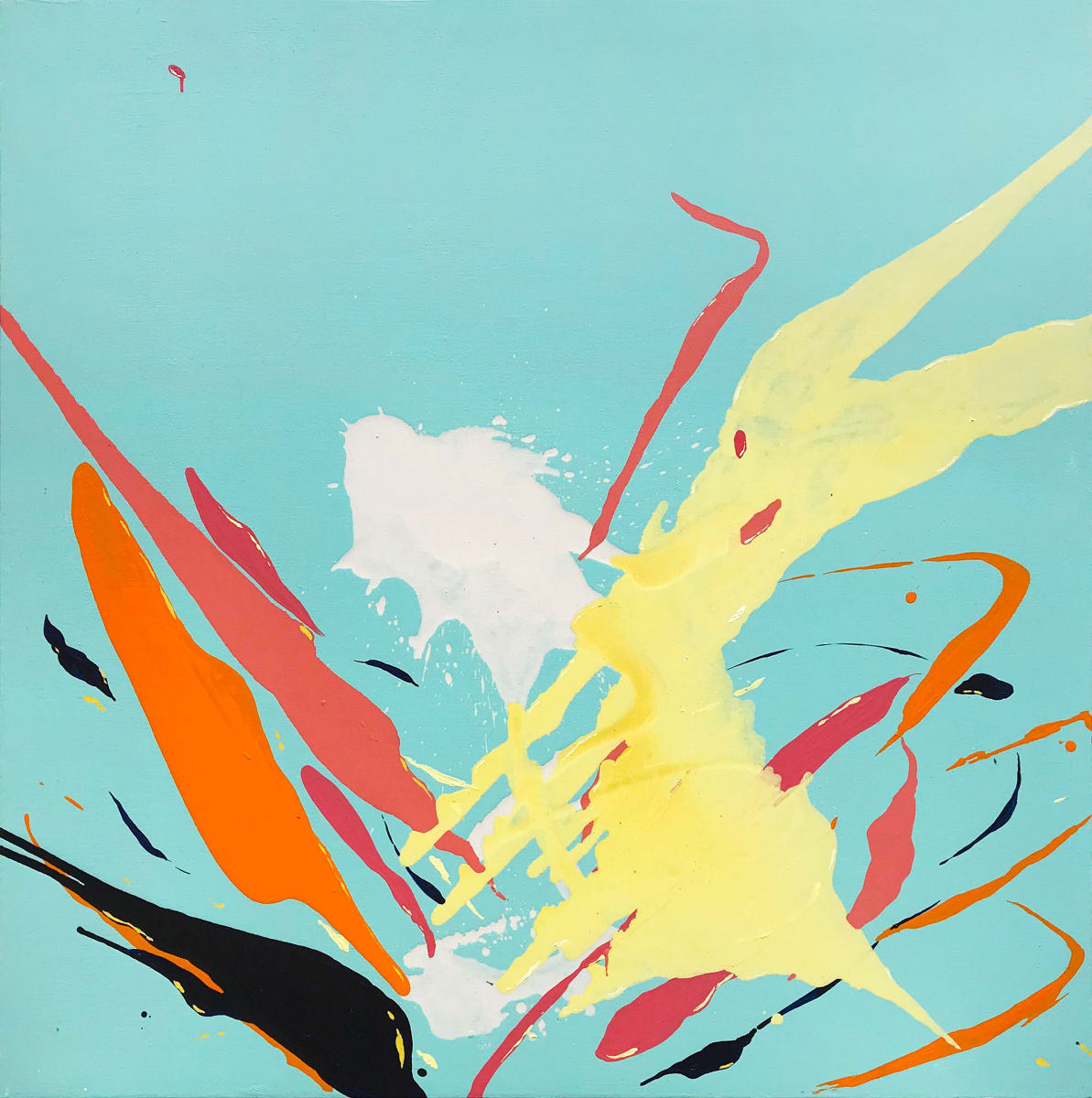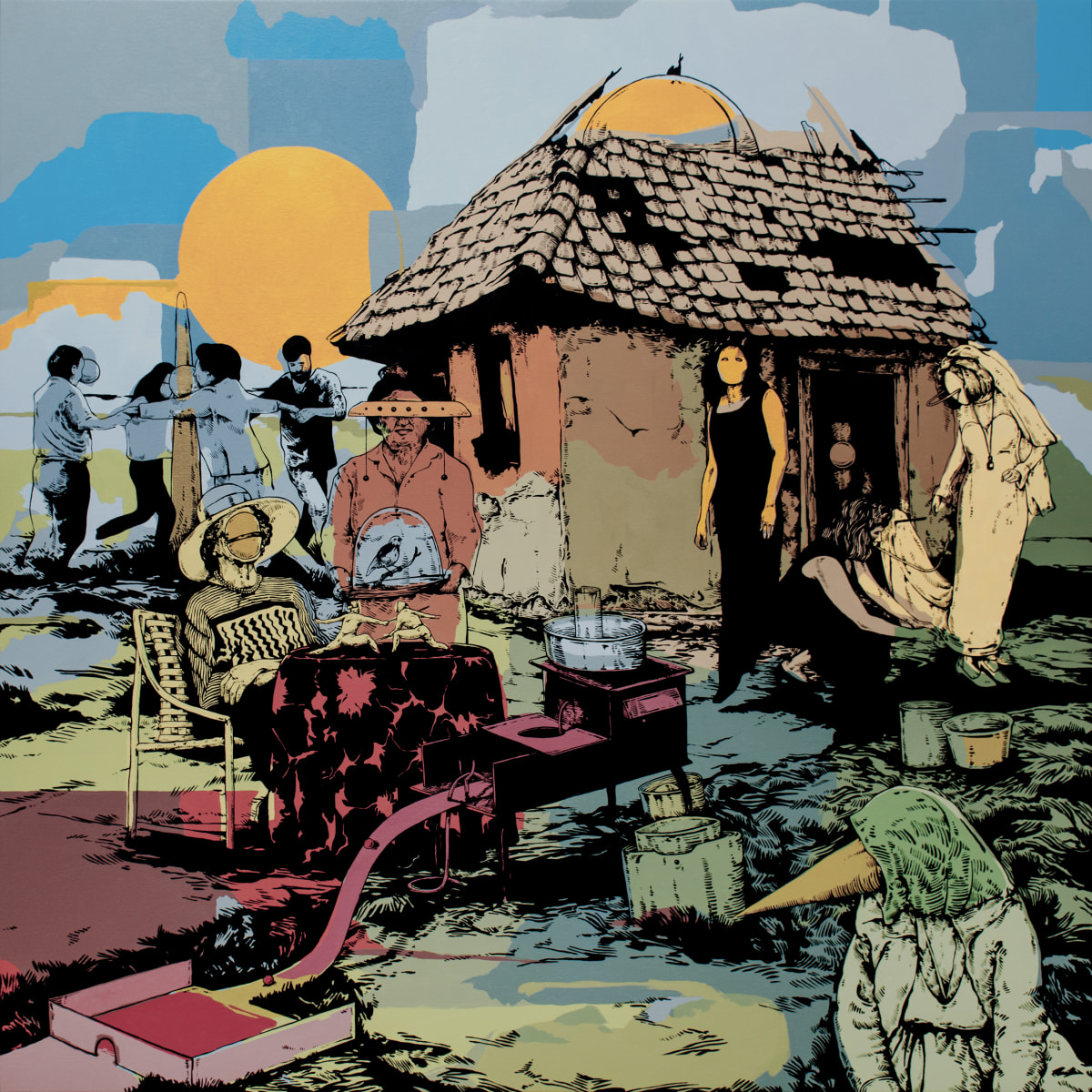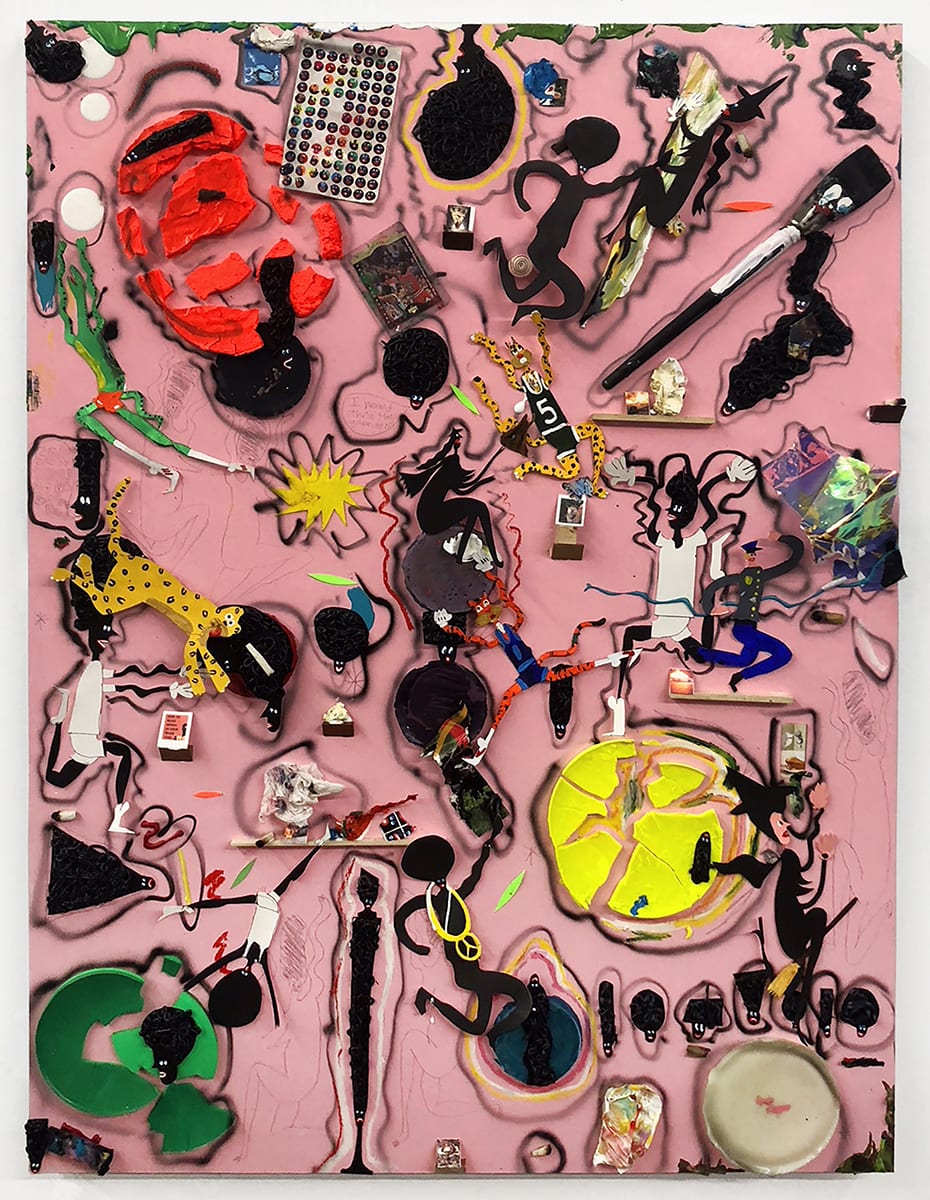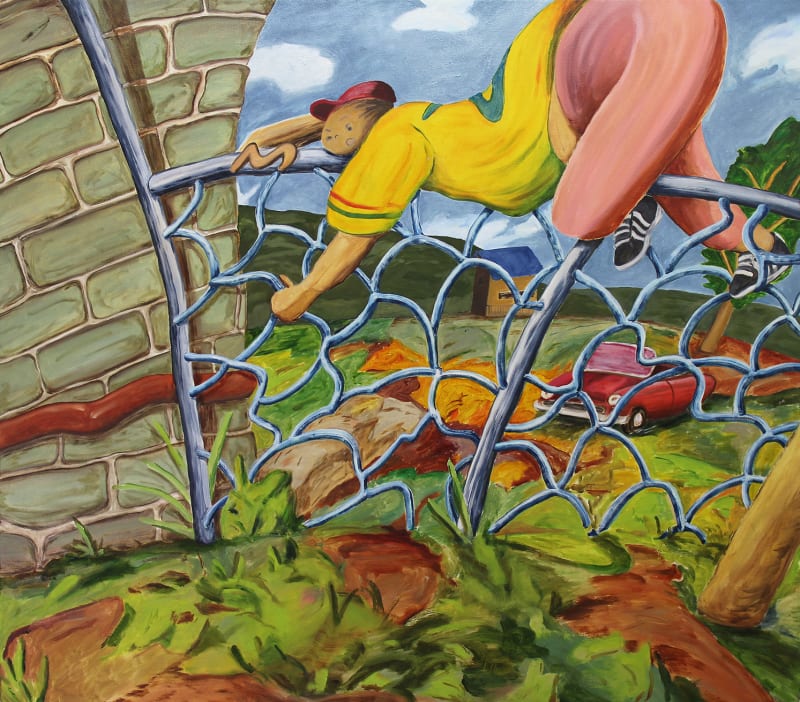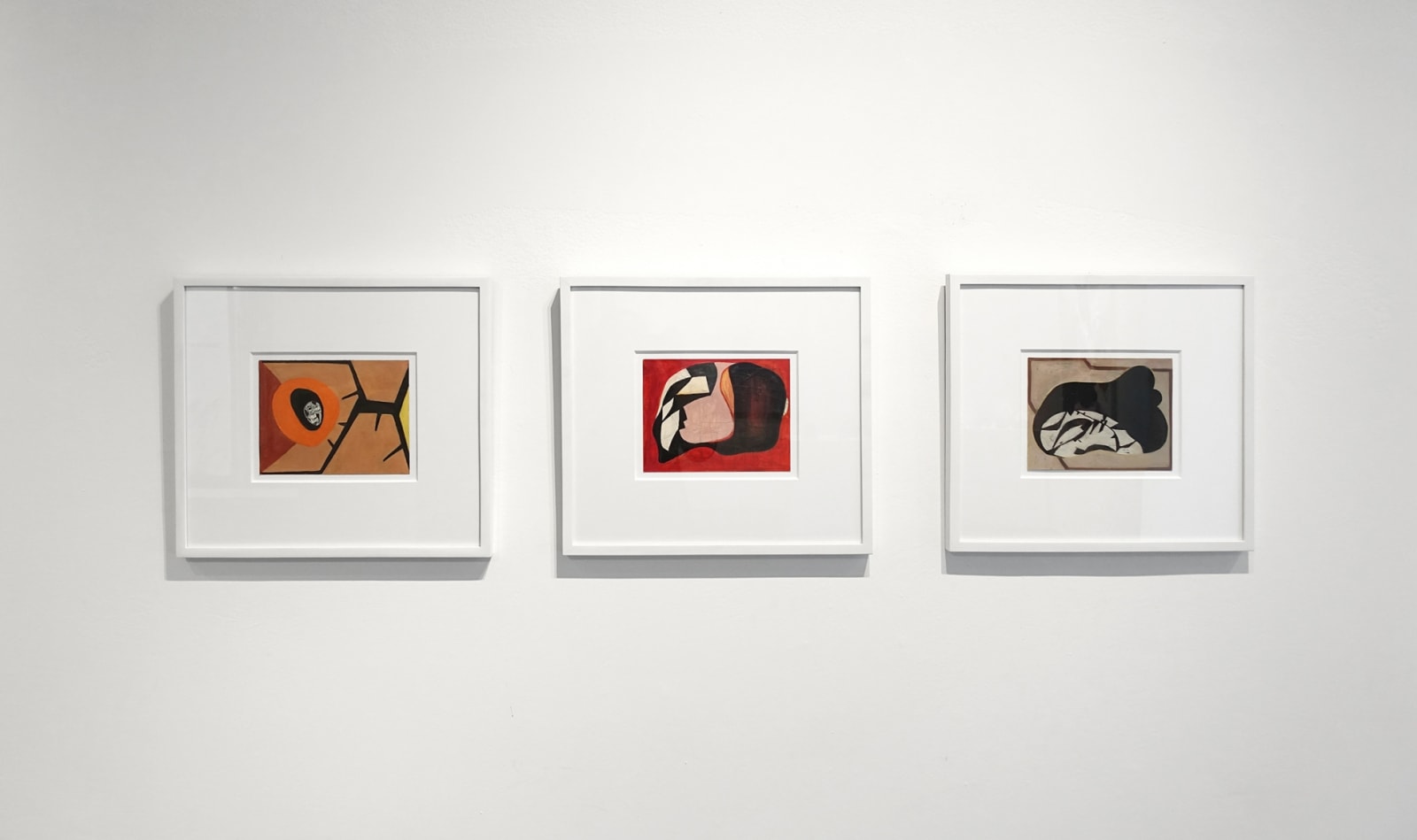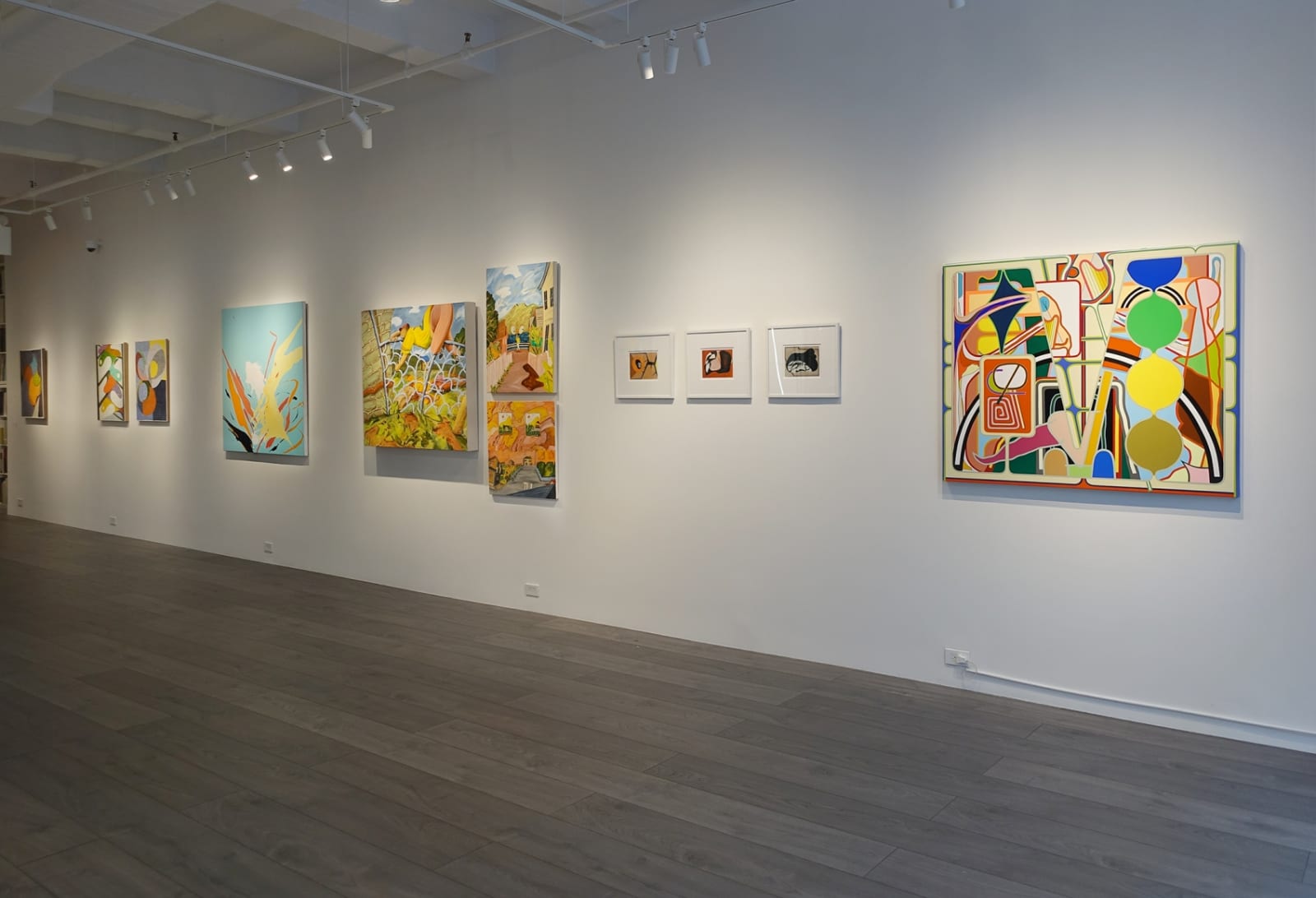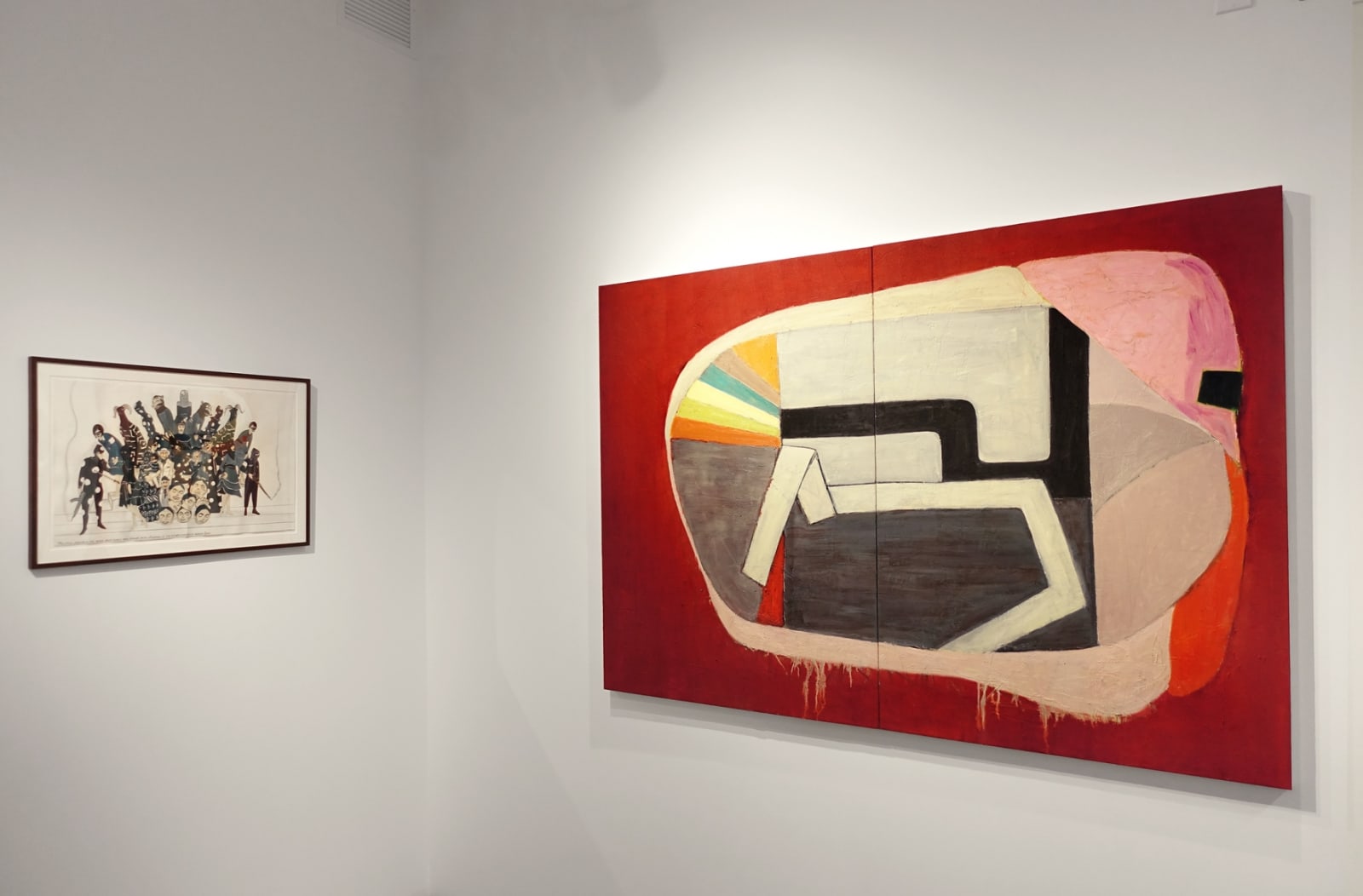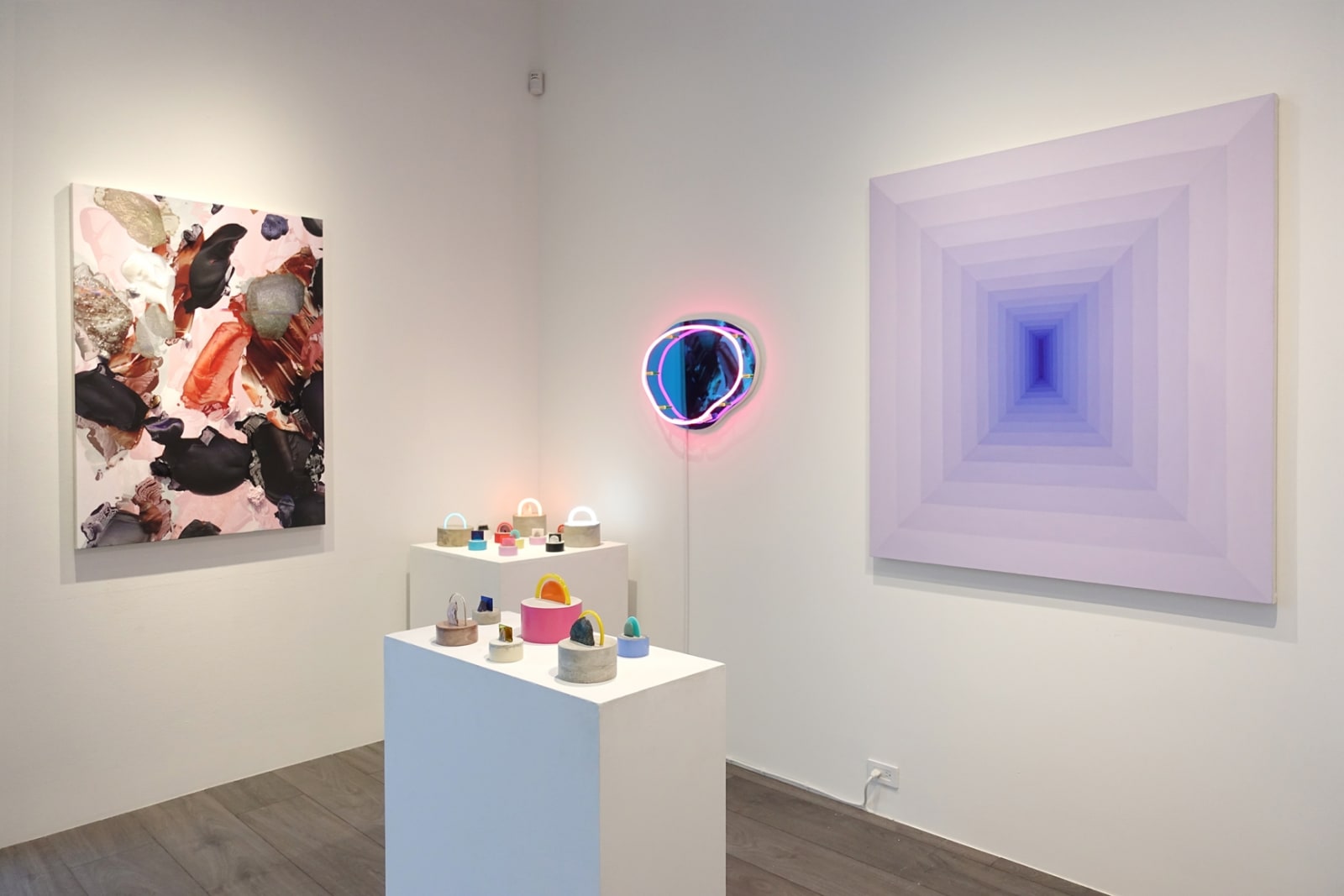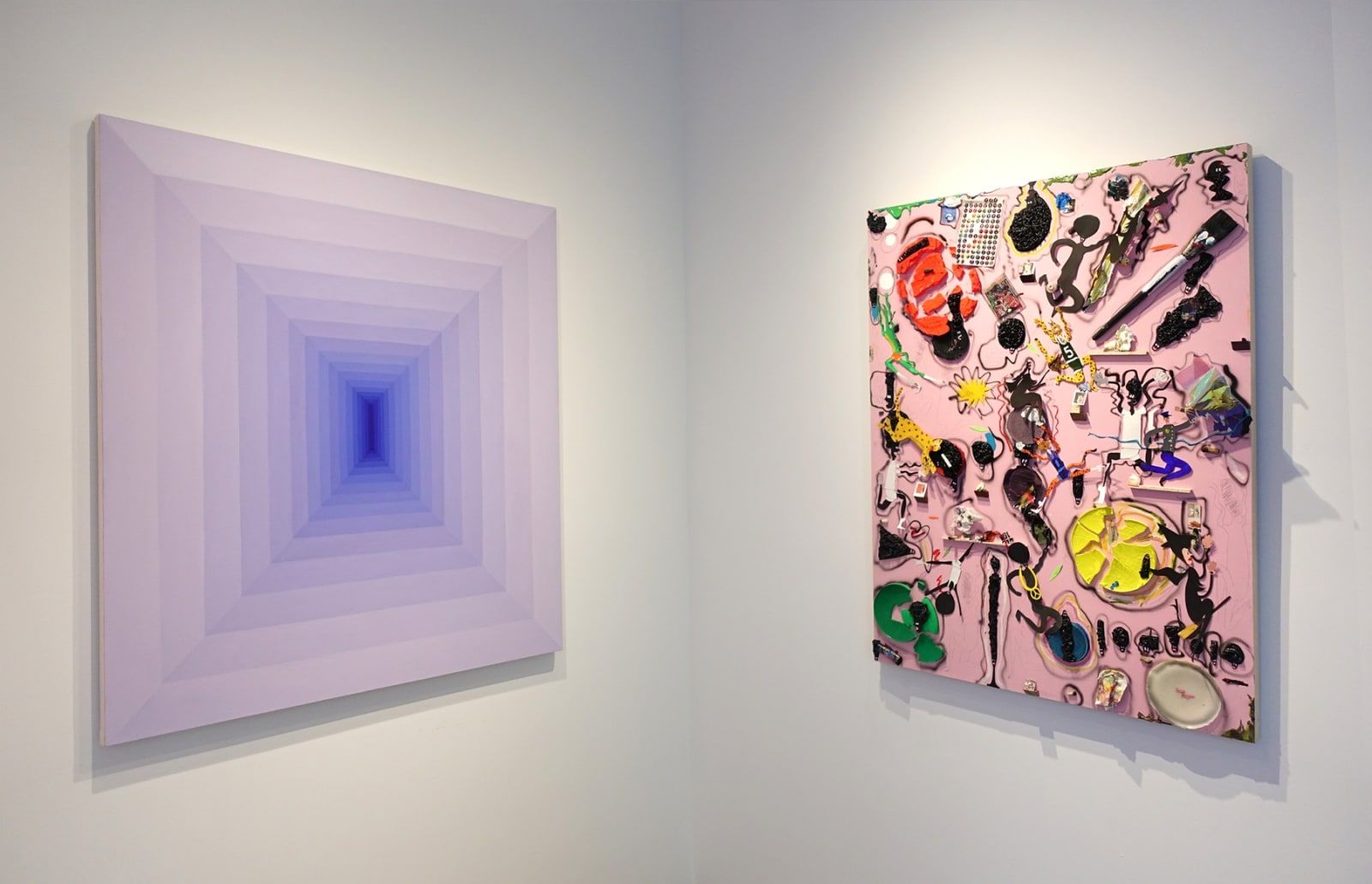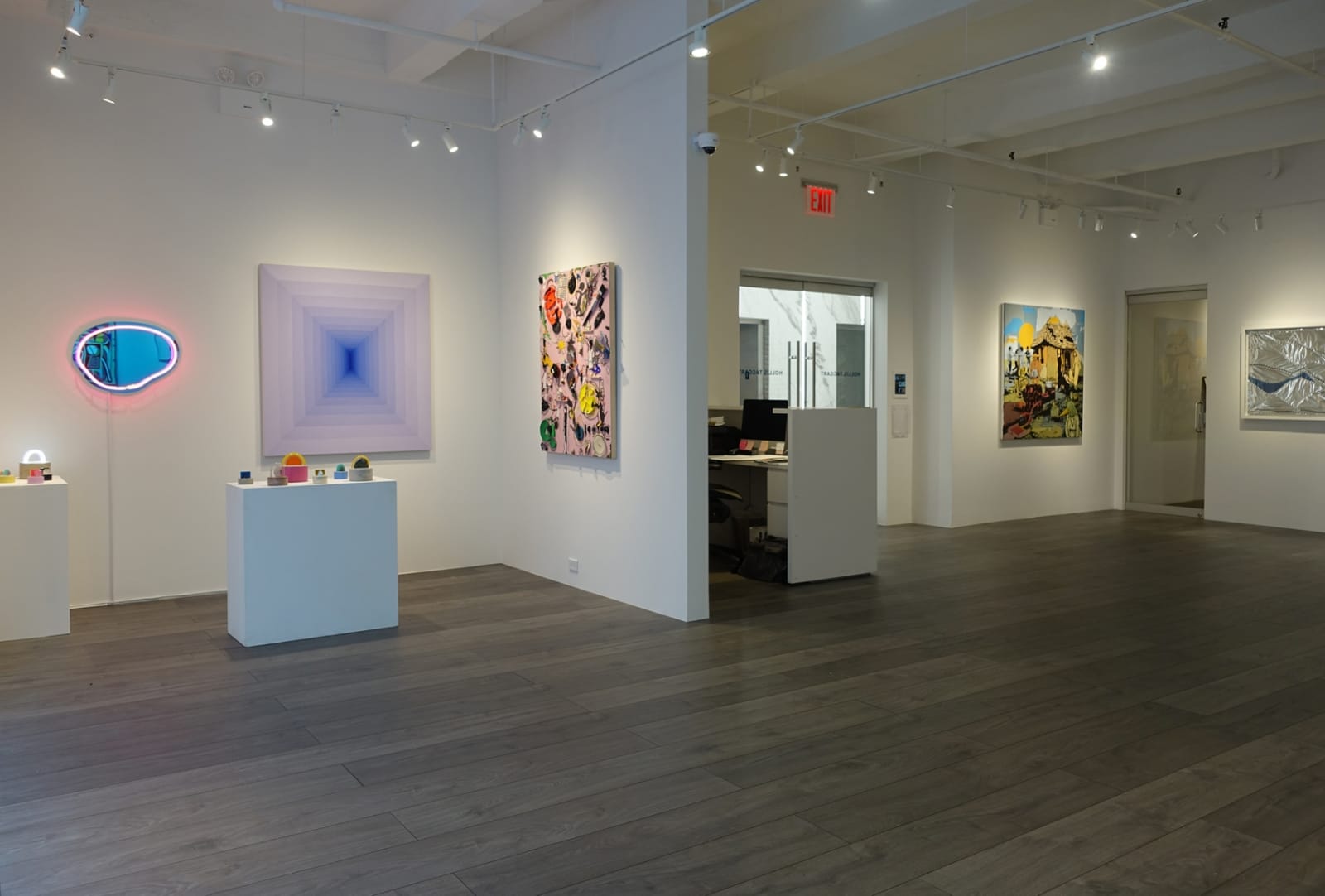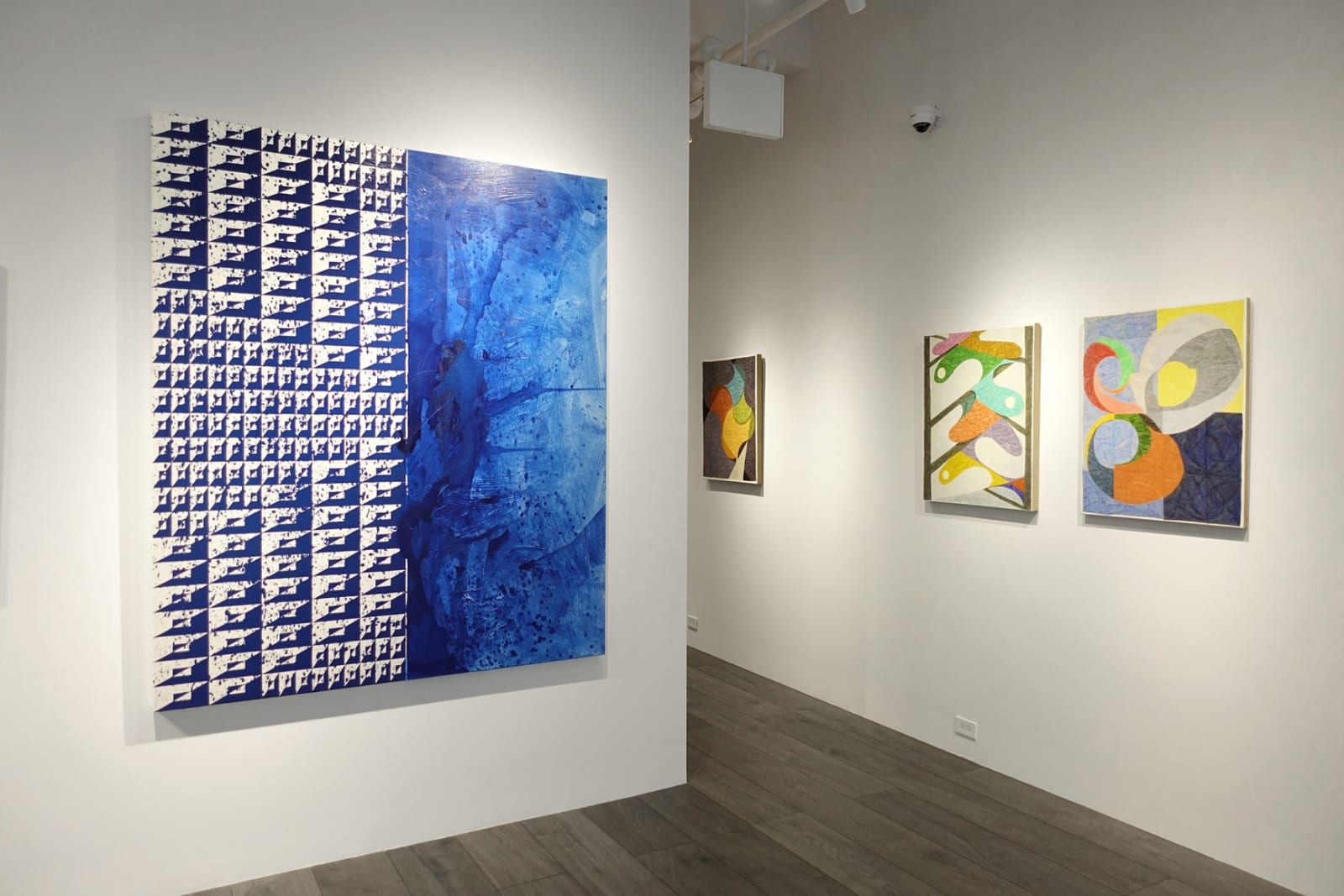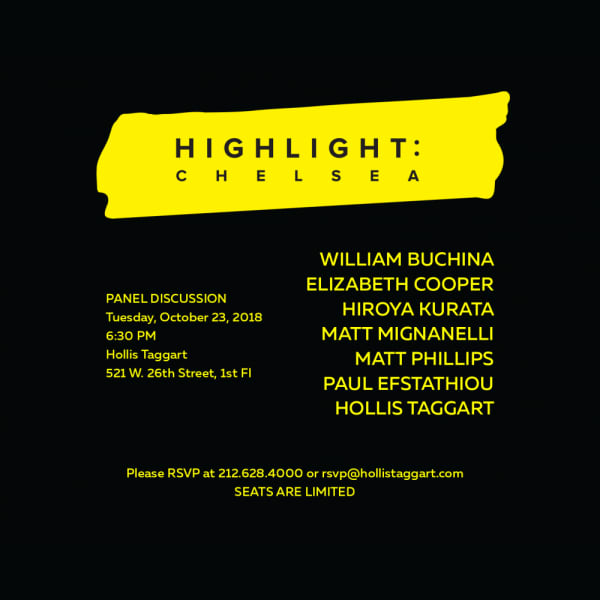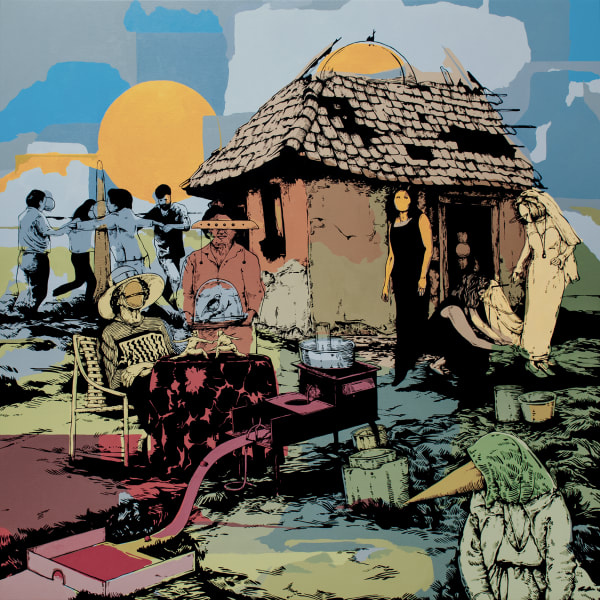
an exhibition of new and recent work by thirteen emerging and mid-career artists
Hollis Taggart is pleased to present Highlight: Chelsea, an exhibition of new and recent work by thirteen emerging and mid-career artists that together underscore the formal and conceptual diversity of contemporary practice. Highlight: Chelsea is guest curated by Paul Efstathiou and marks the gallery’s second collaboration with the independent curator, as it expands its contemporary program. The exhibition will include new work by William Buchina, Elizabeth Cooper, Corydon Cowansage, André Hemer, Hiroya Kurata, John Knuth, Matt Mignanelli, Matt Phillips, Esther Ruiz, Eric Shaw, and Devin Troy Strother, as well as recent works by Marcel Dzama and Brenda Goodman. Highlight: Chelsea emphasizes the featured artists’ distinct styles and approaches, while also creating dynamic aesthetic juxtapositions and parallels between them. Highlight: Chelsea will be on view from October 6 through 27, 2018.
“For me, Highlight: Chelsea is about creating a visually rich and compelling experience for visitors that translates into genuine interest in each artist’s individual practice. The initial impact of an exhibition—that instant feeling of awe—is essential to overcoming the uncertainty that someone might feel in the gallery environment or with contemporary art, generally, and instead inspiring inquisitiveness and connection with an artist or particular work,” said Efstathiou. “I’ve had...
Hollis Taggart is pleased to present Highlight: Chelsea, an exhibition of new and recent work by thirteen emerging and mid-career artists that together underscore the formal and conceptual diversity of contemporary practice. Highlight: Chelsea is guest curated by Paul Efstathiou and marks the gallery’s second collaboration with the independent curator, as it expands its contemporary program. The exhibition will include new work by William Buchina, Elizabeth Cooper, Corydon Cowansage, André Hemer, Hiroya Kurata, John Knuth, Matt Mignanelli, Matt Phillips, Esther Ruiz, Eric Shaw, and Devin Troy Strother, as well as recent works by Marcel Dzama and Brenda Goodman. Highlight: Chelsea emphasizes the featured artists’ distinct styles and approaches, while also creating dynamic aesthetic juxtapositions and parallels between them. Highlight: Chelsea will be on view from October 6 through 27, 2018.
“For me, Highlight: Chelsea is about creating a visually rich and compelling experience for visitors that translates into genuine interest in each artist’s individual practice. The initial impact of an exhibition—that instant feeling of awe—is essential to overcoming the uncertainty that someone might feel in the gallery environment or with contemporary art, generally, and instead inspiring inquisitiveness and connection with an artist or particular work,” said Efstathiou. “I’ve had the pleasure and opportunity to spend substantial time with the featured artists—in some cases the relationships date back many years—and I want visitors to come away with the same enthusiasm that I have for each of them, as well as an understanding of the complexity and variety of what’s happening in art today.”
In reflecting on contemporary practice, several themes emerge within the exhibition. As political and social clashes have increased and been further intensified by digital technologies and platforms, Surrealist sensibilities have re-emerged as an articulation of the current moment. William Buchina’s paintings, which pair disparate images and symbols, appear as strange and inscrutable dreamscapes that meld personal and collective experience, while Marcel Dzama’s whimsical anthropomorphic beings and objects harken to either a time lost or yet to come. In other instances, the social commentary and critique is more overt, as with the work of Devin Troy Strother, whose often humorous and provocative mixed-media pieces examine and illuminate the experience of race in the U.S.
Technology has itself become a fertile space for experimentation, as artists reconcile the ephemerality of the digital realm with the handmade processes of traditional art genres. The liminal space between analog and digital formats form the core of André Hemer’s practice, as he captures the language of the internet in his thickly-painted canvases. Eric Shaw’s complex abstract compositions are formed by layers of lines, colors, and shapes, first created on his smartphone and then laboriously reproduced on canvas in acrylic. In Corydon Cowansage’s abstract paintings, everyday objects such as bricks and blades of grass are re-scaled, patterned, and repeated, resembling in ways the lines of code that comprise our digital universe.
Abstraction also connects the works of Brenda Goodman, whose compositions suggest staring faces and twisted bodies as an evocation of emotion and human experience; Elizabeth Cooper, whose bright color contrasts and splattering and pouring techniques offer a contemporary reprisal of Abstract Expressionism; and Esther Ruiz, who marries organic materials with mass-produced plexiglass and neons to create sculptural objects that feel at once primal and futuristic.
“Highlight: Chelsea offers an exciting opportunity to experience a wide range of artistic production, and to examine the singular approaches that artists are taking to common experience and ongoing formal dialogues,” said Hollis Taggart. “As the gallery continues to expand its contemporary program, we are particularly attuned to giving a platform and voice to emerging artists and those who have been under-represented in our cultural and artistic conversations. This is very much dovetails with Paul’s approach to making contemporary art accessible and inviting to wide range of audiences, and we are enthusiastic about our ongoing collaboration with him.”
Brief biographies for each of the participating artists follow below:
William Buchina’s acrylic and ink paintings incorporate images and symbols from a wide and disparate range of sources. Together, they form absurd and eerie dreamscapes that concurrently suggest and obscure social and political commentaries. Characterized by a graphic quality and rich use of color, the paintings draw the viewer into Buchina’s strange and compelling worlds.
Elizabeth Cooper’s paintings draw on the language of Abstract Expressionism, as she pours, splashes, and splatters her multi-colored oil paints atop swaths of flat monochromatic color fields. Although referential to the past, Cooper’s keen eye for color contrasts and use of neons and pastels make her canvases appear more like contemporary advertisements, with an engaging freshness and vibrancy.
Corydon Cowansage takes inspiration from the subtle details of everyday life, from architectural forms to blades of grass. These referents become the basis for the creation of richly-colored, highly-patterned abstract compositions that bely their origins. Playing with scale, line, and repetition, Cowansage creates works that captivate and deceive the eye.
Marcel Dzama’s work, which often features anthropomorphic beings and objects, is characterized by a sense of whimsy and fantasy that recalls the visual language of Surrealism. While he is best known for his drawings and paintings, rendered in muted tones, the artist has, in recent years, expanded his practice to encompass sculpture and film, bringing his otherworldly beings into the three-dimensional realm.
Brenda Goodman’s work challenges the boundaries between figuration and abstraction, as she creates formal compositions that evoke staring faces, twisted bodies, and convoluted interiors. Her lush paintings, which vary widely in scale, are particularly concerned with the experience of surface and texture, as the embodiments of human emotion and sensation.
André Hemer fuses analog and digital techniques and approaches in his practice, introducing the language of the internet into his rich and painterly surfaces. In this way, Hemer works to reconcile the physicality of the canvas and paint with the ephemerality of digital images, scans, and codes, creating a new space that lives in between.
Hiroya Kurata’s paintings combine representations of found imagery with those of personal remembrances, creating scenes that feel at once familiar and strangely disconcerting. Referencing the visual language of cartoons and landscape paintings, Kurata explores the conception and emotion of nostalgia.
John Knuth investigates the relationship between nature and humanity, emphasizing in particular the impact our actions have on the environment. Using humble and unexpected materials, including distress flares, fly regurgitation, and stretched reflective mylar, Knuth creates poignant metaphors and associations that reflect on the changing environment and what those transformations mean for the future.
Matt Mignanelli’s paintings explore the tension between expressionistic, painterly brushstrokes and the geometric precision of urban plans and architectural forms. Appearing almost as duos, with one side capturing a strict repetition of line and the other freedom of gesture, the works suggest an untenable divide, as the two aspects begin to meld at the center and are connected by the use of deep, saturated color.
Matt Phillips’s softly-colored abstract compositions draw inspiration from a range of sources, including maps, quilts, and architectural forms, and develop organically as he moves across the canvas. Using his self-created water-based paint, Phillips melds the boundaries between color and canvas, as the paint absorbs deeply into the canvas uniting them.
Esther Ruiz’s sculptures explore natural phenomena, pop culture, and the fictional landscapes of the future. Interested in the flashy but dilapidated aesthetic of sci-fi movies of the 1980s and ‘90s, Ruiz’s work marries organic materials such as stone and geodes with mass-produced plexiglass and neon. The result is an object that feels at once grounded in the primal and shaped by the future.
Eric Shaw merges digital technologies with handmade processes, creating his abstract compositions first on a smartphone app and then translating them by hand onto the canvas in acrylic paint. This work is then photographed and reworked further on his phone, resulting in a canvas that has several complex layers of line, shape, and color. This visual intricacy is further amplified by a strategic use of glossy and matte paints to create a dynamic sense of depth.
Devin Troy Strother’s distinctive practice merges the formal vocabularies of painting, collage, assemblage, and sculpture. Never one to shy away from the outrageous and provocative, Strother’s work dares his viewers to enter his madcap narratives, as he plays on and critiques issues related to race and the art historical canon through both figurative and abstract works, on canvas and in three-dimensional space.
For more information about Highlight: Chelsea, please contact us at info@hollistaggart.com or 212.628.4000. For press inquiries, please contact Alina Sumajin or Sascha Freudenheim, PAVE Communications & Consulting at alina@paveconsult.com, 646.369.2050 or sascha@paveconsult.com, 917.544.6057.


